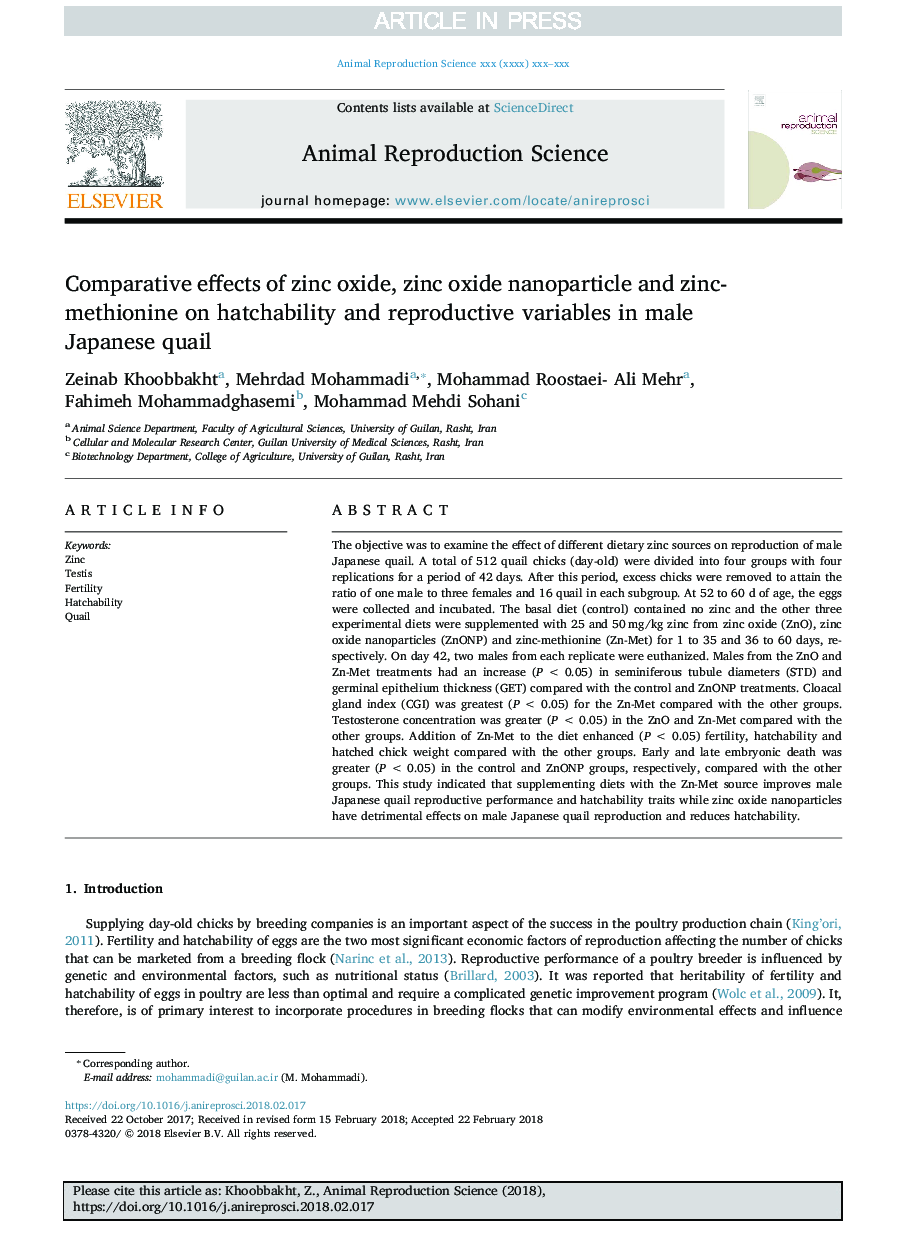| Article ID | Journal | Published Year | Pages | File Type |
|---|---|---|---|---|
| 8403894 | Animal Reproduction Science | 2018 | 7 Pages |
Abstract
The objective was to examine the effect of different dietary zinc sources on reproduction of male Japanese quail. A total of 512 quail chicks (day-old) were divided into four groups with four replications for a period of 42 days. After this period, excess chicks were removed to attain the ratio of one male to three females and 16 quail in each subgroup. At 52 to 60 d of age, the eggs were collected and incubated. The basal diet (control) contained no zinc and the other three experimental diets were supplemented with 25 and 50â¯mg/kg zinc from zinc oxide (ZnO), zinc oxide nanoparticles (ZnONP) and zinc-methionine (Zn-Met) for 1 to 35 and 36 to 60 days, respectively. On day 42, two males from each replicate were euthanized. Males from the ZnO and Zn-Met treatments had an increase (Pâ¯<â¯0.05) in seminiferous tubule diameters (STD) and germinal epithelium thickness (GET) compared with the control and ZnONP treatments. Cloacal gland index (CGI) was greatest (Pâ¯<â¯0.05) for the Zn-Met compared with the other groups. Testosterone concentration was greater (Pâ¯<â¯0.05) in the ZnO and Zn-Met compared with the other groups. Addition of Zn-Met to the diet enhanced (Pâ¯<â¯0.05) fertility, hatchability and hatched chick weight compared with the other groups. Early and late embryonic death was greater (Pâ¯<â¯0.05) in the control and ZnONP groups, respectively, compared with the other groups. This study indicated that supplementing diets with the Zn-Met source improves male Japanese quail reproductive performance and hatchability traits while zinc oxide nanoparticles have detrimental effects on male Japanese quail reproduction and reduces hatchability.
Keywords
Related Topics
Life Sciences
Agricultural and Biological Sciences
Animal Science and Zoology
Authors
Zeinab Khoobbakht, Mehrdad Mohammadi, Mohammad Roostaei- Ali Mehr, Fahimeh Mohammadghasemi, Mohammad Mehdi Sohani,
